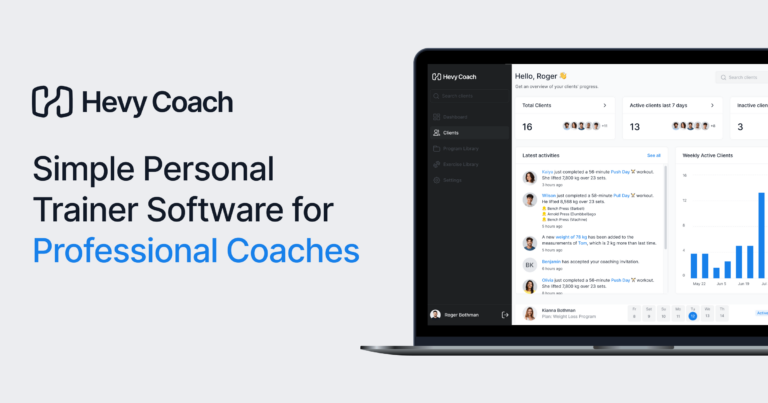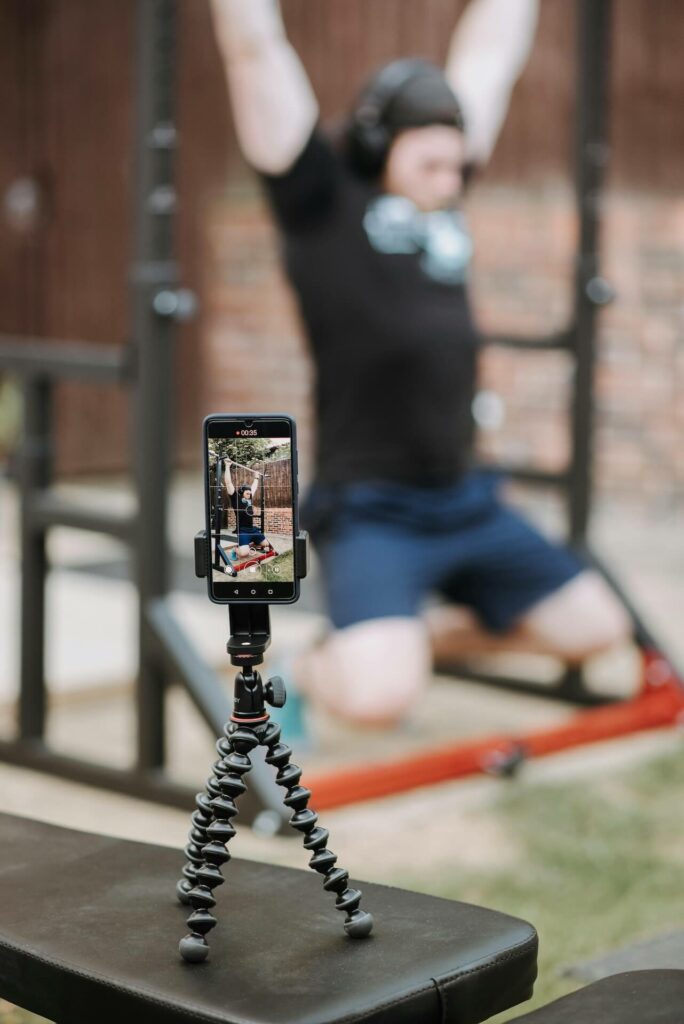Influencers have emerged as authoritative figures in the fitness industry. While once an obscure career path, influencers today can earn good money, enjoy more freedom, and help thousands or even millions of people make better choices.
But beyond the sponsored posts, motivational quotes, and shirtless selfies, fitness influencing has a business side to it. The work required to succeed is no joke, and people must be paid for their time, effort, and ingenuity.
But how much money can an influencer earn, what factors play a role, and what strategies do these people use to bring in the big bucks? Read on because we are breaking it all down today.
How Much Do Fitness Influencers Make?
Most influencers fall into the nano category (1,000 to 10,000 followers) and earn $150 to $600 per sponsored post. Those with more followers can earn $5,000 or even $10,000+ per post.
However, an influencer’s earnings potential will also depend on what other tactics they use, how often they promote products, and how engaged their audience is.
The Income Potential for Fitness Influencers
The above numbers can vary greatly depending on the influencer’s engagement rate and ability to negotiate with brands.
Some of the biggest fitness influencers today reportedly earn millions yearly. For instance, Simeon Panda reportedly makes $17.5m (£12.5m) annually across Instagram, TikTok and YouTube.
He leverages his vast social media following to promote his clothing line, online coaching services, fitness equipment, shaker bottles, supplements, and more. These revenue streams and strategic sponsored posts allow him to earn life-changing money.
However, most influencers never reach that level. Only a select few can enjoy such huge earnings by starting early, being a hard worker, branching out, and having some luck.
Factors that Affect an Influencer’s Income Potential
1. Follower Count
One of the primary things affecting the income potential of health and fitness influencers is their follower count.
Brands looking to collaborate with influencers will generally judge and categorize them based on their following. For instance, brands might only hire influencers with 10,000 to 100,000 followers. Conversely, they may purposefully target those with fewer Instagram followers to get a better deal on sponsored posts and see if there is a positive return on investment.
2. Engagement Rate
The top influencers are those with the largest following across Instagram, TikTok, and YouTube. For example, if someone has hundreds of thousands or millions of followers, they are likely doing well.
That said, follower count alone is not everything because of fake followers. Some aspiring influencers think they can game the system by using software or paying for a service that artificially inflates their follower count. By doing so, brands are more likely to reach out with various business propositions.
However, this doesn’t work because brands also consider the engagement rate. In other words, how many likes, comments, and shares do you get on the average social media post?
Someone with 4,000 followers getting 200 likes per post wouldn’t be suspicious. But someone with millions of followers barely breaking 500 likes and 20 comments? That’s going to raise some eyebrows.
3. Content Quality
The competition on social media platforms is brutal. According to data, “There are 4.8 billion social media users worldwide, representing 59.9% of the global population and 92.7% of all internet users.” (Source: SearchEngineJournal)
The exact percentage of influencers is impossible to pinpoint. Still, even if we make an incredibly conservative estimation that 0.01 percent are influencers or aspire to be, that’s still a staggering 480,000 people.
However, the actual number is far higher. According to sources, Instagram alone is home to more than 64 million influencer accounts, most of which (91.07%) fall into the nano category with 1,000 to 10,000 followers.

While these numbers might not be 100 percent accurate and are likely to change over time, they tell us two things:
- Instagram influencers have their work cut out for them because the competition is fierce. Finding a way to stand out can be nearly impossible, and things are no different on other platforms like YouTube and TikTok.
- Small-time influencers are the majority and must compete for every follower with millions of other content creators in their niche.
Given this information, creating quality content is one of the best ways to stand out in this literal sea of influencer marketing. The more unique, helpful, and engaging content you create, the likelier you are to attract people and experience viral growth, leading to better earnings.
4. Relevance
Do you know who your target audience is? Have you spent time thinking about your ideal follower? How old are they, where do they work, what interests them?
Spending time to get clear on these and similar details is essential for learning what type of content to produce, what to promote, and what products to create.
Here’s an example of a clear mismatch between your audience and the products you promote:
You spend months creating content around resistance training:
- How to select and sequence exercises for growth
- How to progress your bench press
- Which rowing variation is better for lat growth
- How much protein to eat daily and what the best sources are
- How important creatine, BCAAs, and similar supplements are for growth
And many similar topics.
The content you produce is of good quality and helpful. It grows your following to a few thousand, so you decide to make a digital product and promote it.
However, instead of making a course on hypertrophy (important theoretical information, practical tips, workout videos, exercise instructions, nutritional guidance for growth, etc.), you create an eBook on running.
Or perhaps you don’t create a product but instead decide to promote one that doesn’t align with your audience’s interest. The reason? Some brand has reached out and promised a good commission on each successful sale.
How successful do you think that would be? Not very, right? Yet, this is how many eager influencers go about growing and monetizing an audience.
5. Brand Partnerships
One of the primary ways for a social media influencer to earn money is through brand partnerships through endorsements and affiliate marketing. For example, as an Instagram influencer grows a following, they can reach out to various brands to negotiate a deal.
Brands can pay the influencer to act as a brand advocate so long as that person aligns with their target customers. The more informal alternative is for the influencer to become an affiliate partner and get a unique link. When someone clicks on the link and makes a purchase, the influencer earns a percentage-based commission.
As you can imagine, the amount of money an influencer can make through brand partnerships will largely depend on the follower count, engagement rate, the quality of content produced, and how relevant it is to the target audience.
The brand partnership itself is also a factor. For example, if the brand pays a higher commission (say, 50% instead of 25%), the influencer can earn twice as much from the same number of successful sales or the same amount from half the sales. Also, the influencer can make more from sponsored posts if they negotiate better deals.
Let’s say your Instagram account has 7,000 followers when you first negotiate the terms of your partnership. Months later, your follower count might double or even triple, giving you leverage.

Try Hevy Coach
Intuitive personal trainer software, with a world class experience for your clients.
30 day free trial, no credit card required
6. Own Products
While most people start with sponsored posts and affiliate marketing, many fitness influencers earn extra money through their products: shirts, training equipment, a supplement line, digital products (courses, eBooks, etc.), or a fitness app.
Having your products is excellent for several reasons:
- You get to control all aspects of the product to make it as valuable as possible for your target audience.
- The profit margins are much bigger, allowing you to keep the lion’s share from each sale.
- Selling your products is safer. You’re not at the mercy of another brand that might cut you out, reduce your commission percentage, pay you less per post, or change their product so much that it no longer benefits your audience.
- Creating multiple products over time allows you to diversify your business and not rely on brand collaborations to earn a good income.
- You can gather valuable feedback from your audience to refine your products and create a successful fitness business. In contrast, promoting other people’s products leaves you in the dark.
Even if someone buys something and you earn a commission, any issues or feedback would not pass through you, keeping you from getting valuable insight about your audience and market.
7. Monetization Strategies
Lastly, we have an overview of the monetization strategies the fitness influencer uses. Folks who put more time and effort into sponsored content, affiliate marketing, and promoting their products generally earn more money because of repeated exposure.

The rule of seven in marketing suggests that “it takes, on average, seven messages to a customer before they make a purchase” (Indeed.com).
Many of your followers might potentially become customers, but they would need to be exposed to a product or service up to seven times.
Additionally, combining monetization approaches will likely yield better results than using a simple strategy (e.g., sponsored posts) for a single product or service. Diversifying your approach would allow you to pique more people’s interest.
Of course, there is such a thing as trying to sell too much and annoying your followers. Most Instagram users don’t go on the platform to be sold something. They log in to entertain themselves, stay up-to-date with current events, and learn new things on topics that interest them.
So, while promoting products to your followers is entirely okay, create a healthy balance between providing value and selling. That way, everyone would get something out of following you, and those interested can check out what you’re promoting.
6 Ways for Fitness Influencers to Earn Money
1. Sponsored Posts
Sponsored posts are one of the most straightforward ways to make money as a fitness influencer. Big and small brands recognize the power of influencer marketing and how the proper endorsement can boost sales numbers considerably.
In a sponsored post, the influencer finds a way to integrate the brand’s product or service into their content, showcasing its benefits and usefulness.
For example, if a fitness influencer wants to promote a product, such as a lifting belt, they could record videos where they wear it to perform heavy compound lifts.
The key behind a good sponsored post is to look natural and provide some value even if the person doesn’t make a purchase. For example, if the goal is to promote a lifting belt, the influencer can upload some videos of how to wear one correctly and what the benefits are.
2. Affiliate Marketing
Affiliate marketing can be another lucrative way for a fitness influencer to earn good money, so long as they promote the right products. Like sponsored posts, the objective is to promote something, be it a physical or digital product or a service.
You must explain what the thing is, its benefits, and what problems it can solve for people.
The primary difference is that, instead of being paid a flat fee for posting, you’re given a unique affiliate link that tracks clicks and sales. If someone clicks through to the sales page with your link and makes a purchase, you earn a commission.
The beauty of affiliate marketing is that it is a win-win because influencers earn a percentage of each sale at no extra cost to the customer. Brands also get more visibility and make sales they otherwise wouldn’t.
As with other marketing strategies, transparency is critical. Social media influencers must promote products they genuinely believe in and use themselves. That allows them to create more in-depth content and speak from experience.
3. Online Coaching
Online coaching is an effective way for fitness professionals to take advantage of their knowledge and expertise to help people worldwide.
Fitness influencers can leverage their followers on Instagram and other platforms to sign new clients and earn good money. Services can range from selling meal and workout plans to providing exercise instructions and even online classes for beginners.
Thanks to the rapid development of online tools and platforms, online coaches can communicate with clients more efficiently, provide the proper guidance, keep them accountable, and make quick adjustments when necessary.
For instance, Hevy Coach is an all-in-one platform where coaches can quickly put together workout programs, assign them to clients, and make adjustments if necessary.
The beauty of online coaching is that it strengthens the bond between the fitness influencer and their followers. Helping people directly makes you less of a distant figure and more of a coach and mentor people can work with to get the help they need.
Plus, the beauty of this approach is that it gives influencers more opportunities to show everyone how their knowledge and expertise help people. By showcasing client transformations, influencers give everyone a glimpse of what they can do for people.

Try Hevy Coach
Intuitive personal trainer software, with a world class experience for your clients.
30 day free trial, no credit card required
4. Digital Products
Besides supporting clients on their fitness journey, influencers can take full control of their business and promote their products instead of advertising someone else’s.
Options here include eBooks, digital courses, workshops, and seminars.
The great thing about digital products is you only have to create them once and can then sell them countless times, even on autopilot. A simple $9.99 eBook can earn you thousands or even tens of thousands of extra dollars over a few years.
Courses are even better because they are more thorough and can sell for more. Cheaper courses run for as little as $49-$99, whereas premium-level ones cost hundreds of dollars or well over $1,000.
5. Selling Merchandise
Merchandise is not the go-to option for most fitness influencers because it is more challenging. Still, it can be a fantastic way to branch out as your following numbers grow and you accumulate more capital.
Merchandise can range from simple items like branded T-shirts to more complex ones like activewear, training tools (e.g., wrist wraps), journals, and dietary supplements.
Selling merchandise provides a few distinct advantages. First and most obvious, this is another revenue stream. Second, branded merch can serve as an advertisement, solidifying an influencer’s presence in the industry. For example, if people wear your branded shirts at the gym, others might be intrigued to check out your brand online.
Third, many followers often take pride in wearing merch from their favorite influencers, which can foster a sense of community that goes beyond social media.
6. Creating YouTube Content
Despite its faults, YouTube is still an incredible platform for content creators. As of 2024, the platform has 2.7 billion active users and is projected to reach 2.85 billion by 2025 (Source: DemandSage).

Here are a few other interesting highlights from the same source:
- 52% of internet users access YouTube at least once a month.
- Over 122 million people visit YouTube every day via its Website and Apps.
- YouTube Shorts surpassed 50 billion daily views in February 2023.
- Technically, YouTube is the second biggest search engine after Google.
- Users consume 1 billion hours of videos on YouTube every day.
- YouTube is the second most popular platform for Influencer Marketing. Instagram tops the list.
Even more interesting is that YouTube takes 45 percent of ad revenue, leaving the remaining 55 percent to content creators. This means YouTube is a popular platform, the home for many influencers, and a great place to earn good money through ads.
Even better? Video shorts continue to rise in popularity, meaning influencers can create one video and upload it to Instagram, TikTok, and YouTube Shorts.
Conclusion
Fitness influencers are presented with countless opportunities to earn good money. From sponsored posts that provide value to the sale of digital products and merchandise, social media platforms can be the foundation of multi-million dollar businesses.
However, it’s important to note that the competition is fierce, with Instagram alone hosting 64+ million influencer accounts. Over 90 percent of influencers fall in the nano category with 1,000 to 10,000 followers.
For these reasons, it’s crucial to base your practice around honesty, transparency, and the desire to genuinely help others. Building authentic relationships with people will solidify your name in the industry and skyrocket your earnings potential.
Check out Hevy Coach before you go. The all-in-one platform makes it easy for trainers and coaches to create routines in minutes, assign them to clients, make adjustments when necessary, and track progress.
FAQs
1. What is a fitness influencer?
A fitness influencer uses social media platforms to educate, inspire, and influence others. Such individuals often use their expertise, knowledge, and insight to provide helpful content for those interested in fitness.
2. Does the number of followers directly correlate with income?
While follower count is the first thing most people notice, other factors, such as engagement rate, content quality, and the relevance of an influencer’s offers, impact income potential.
3. How do fitness influencers make money?
Typically, this is done through sponsored posts, affiliate marketing, selling digital products and merchandise, online coaching, and creating content for YouTube.




